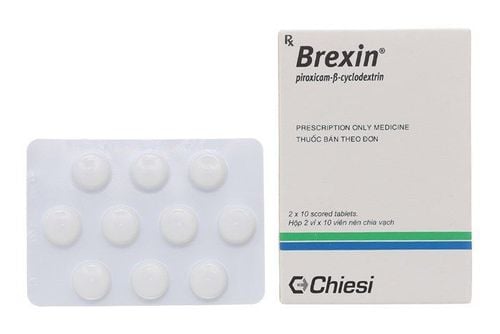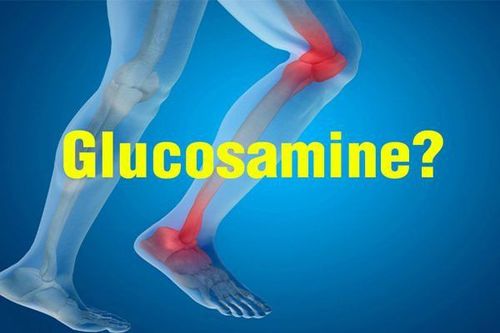This is an automatically translated article.
Glucosamine is a molecule that exists naturally in the body, but it is also a substance that can be obtained from the daily diet. Glucosamine is often used to treat symptoms of osteoarthritis, in addition to being used to treat a number of other inflammatory diseases.
1. What is Glucosamine?
Glucosamine is a naturally occurring compound classified as an amino sugar. Glucosamine is considered the "brick" that helps the body build cells and tissue structure, playing an important role in many functions in your body. Glucosamine is mainly responsible for the development and maintenance of cartilage in the joints of the body.
Glucosamine is also found in a number of animals and non-human tissues, including seashells, animal bones, and mushrooms. In fact, supplemental forms of glucosamine are often obtained from these natural sources.
Glucosamine is commonly used to treat and prevent joint disorders, such as osteoarthritis. It can be taken orally or applied topically in the form of a cream or ointment.
2. Glucosamine Can Reduce Inflammation
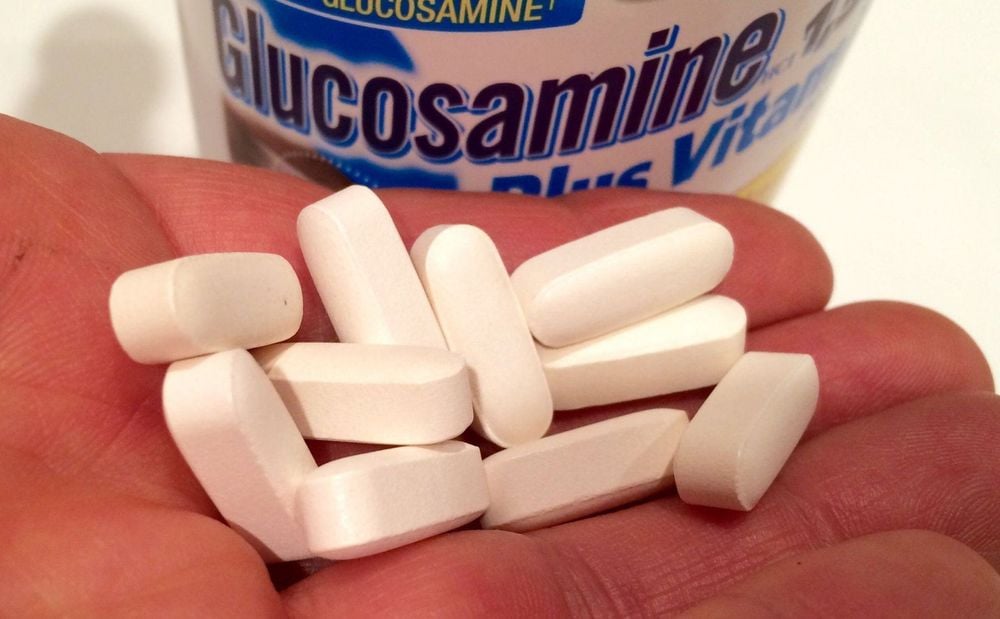
Glucosamine có thể làm giảm viêm
Glucosamine is commonly used as a supplement to treat the symptoms of a variety of inflammatory conditions. Although the mechanisms of glucosamine's inflammation-reducing effects are still poorly understood, its anti-inflammatory effects have been shown to be effective.
One test-tube study demonstrated significant anti-inflammatory effects when glucosamine was administered to cells involved in bone formation. Much of the research on glucosamine involves supplementing with chondroitin (a glucosamine-like compound) which has also been linked to improved function and maintenance of healthy bone cartilage.
A study of 200 people showed an association between glucosamine supplementation with 28% and 24% reductions in two biochemical markers specific for inflammation, CRP and PGE. However, these results are not statistically significant. It's worth noting that the same study showed a 36% reduction in these inflammatory markers in people taking chondroitin, and the results are significant.
Other studies share similar findings. However, study participants taking chondroitin also reported concomitant glucosamine supplementation. Therefore, it remains unclear whether the outcome is influenced by chondroitin alone or the combination of both supplements providing an anti-inflammatory effect. More research is needed on glucosamine's role in reducing inflammatory diseases in the body.
3. Strengthens the health of joints
Glucosamine exists naturally in your body. One of its main roles is to support the growth of tissues between your cartilage and joints. Articular cartilage is a smooth white tissue that covers the ends of your bones, at the ends of which when the bones come into contact, they form a joint.
In this tissue organization, together with a lubricating fluid called synovial fluid allows the bone to move freely and freely, minimizing friction and allowing painless movement at the joint.
Glucosamine helps form several chemical compounds involved in the creation of joint cartilage and synovial fluid. Some research indicates that supplemental glucosamine may protect joint tissue by preventing cartilage breakdown.
One small study in 41 cyclists found that supplementing with up to 3 grams of glucosamine daily reduced collagen degeneration in the knees by 27% compared with 8% in the placebo group.
Another small study found a significantly reduced rate of collagen breakdown compared with markers of collagen synthesis in the joints of soccer players treated with 3 grams of glucosamine daily for a period of three months.
These results suggest a joint-protective effect of glucosamine. However, more research is needed.
4. Glucosamine is commonly used to treat bone and joint disorders
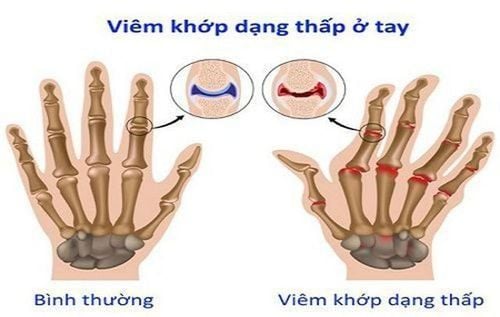
viêm khớp dạng thấp
This compound has been specifically studied for its ability to treat symptoms and disease progression associated with osteoarthritis, rheumatoid arthritis, and osteoporosis.
Many studies show that daily glucosamine sulfate supplementation can provide effective long-term treatment for osteoarthritis by significantly reducing pain, maintaining joint space, and slowing disease progression.
Several studies have shown no significant reduction in rheumatoid arthritis (RA) markers in rats treated with various forms of glucosamine.
In contrast, a human study performed did not show any major changes in RA progression with glucosamine use. However, study participants reported significant improvement in symptoms.
Some early research in rats with osteoporosis also shows the potential of using glucosamine supplements to improve bone strength. While these results are encouraging, more human studies are needed to understand the mechanism and best application for glucosamine in joint and bone diseases.
5. Other uses of Glucosamine
Although people use glucosamine to treat many chronic inflammatory diseases, the scientific data to support this use is limited.
5.1. Interstitial Cystitis
Glucosamine is widely promoted as a treatment for interstitial cystitis (IC), a condition associated with a deficiency of the compound glycosaminoglycan.
Since glucosamine is a precursor to this compound, it has been hypothesized that glucosamine supplements might help treat interstitial cystitis. Unfortunately, valuable scientific data to support this hypothesis is still lacking.
5.2. Inflammatory bowel disease (IBD)
Like interstitial cystitis, inflammatory bowel disease (IBD) is associated with glycosaminoglycan deficiency.
Few studies support the notion that glucosamine can treat IBD. However, one study in mice with IBD indicated that glucosamine supplementation was able to reduce inflammation. Finally, more studies are needed to draw conclusions about the therapeutic efficacy of glucosamine in inflammatory bowel disease.

Viêm bàng quang kẽ
5.3. Multiple Sclerosis (MS)
Some sources suggest that glucosamine may be an effective treatment for multiple sclerosis (MS). However, the scientific evidence for this method is still lacking.
One study evaluated the effectiveness of using glucosamine sulfate along with traditional therapy for the treatment of relapsing MS. Results showed no significant impact on relapse rate or disease progression with glucosamine use.
5.4. Glaucoma
Glaucoma is thought to be treatable with glucosamine. Some early research indicates that glucosamine sulfate may promote eye health through reduced inflammation and antioxidant effects in the retina of the eye.
In contrast, one small study indicates that excessive amounts of glucosamine can be harmful for people with glaucoma. Overall, the current data are still controversial.
5.5. Temporomandibular Joint (TMJ)
Some sources suggest that glucosamine is an effective therapy for TMJ. However, research to support this claim is insufficient.
One small study showed a significant reduction in markers of pain and inflammation, as well as an increase in jaw mobility in participants given a combination supplement of glucosamine sulfate and chondroitin.
Another small study found no significant short-term effects of glucosamine hydrochloride supplementation in people with TMJ. However, this study showed long-term pain relief in study participants.
These study results are very promising, but the current evidence does not provide any definite conclusions about the effectiveness of this treatment.
6. How effective is Glucosamine?
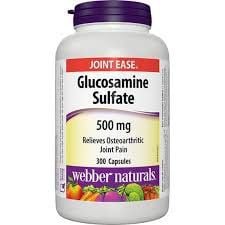
Glucosamine sulfate
Although many theories have been put forward about the positive effects of glucosamine on many diseases, current studies only support the use of glucosamine for certain conditions.
Currently, the strongest evidence supports the use of glucosamine sulfate for the long-term treatment of osteoarthritis symptoms. According to the available data, Glucosamine is less likely to be an effective treatment for other diseases or inflammatory conditions.
If you are considering taking glucosamine, be aware of the quality of the supplement you choose, as this can make a difference in the effectiveness of glucosamine.
In some countries, including the United States, there is little regulation of glucosamine supplements in the diet. As a result, there are many fake labels about glucosamine effects
Always keep in mind that the best way to test a product is to get a third party certification to make sure you can get it. get exactly what you're paying for. ConsumerLab, NSF International and US Pharmacopeia (USP) are a few independent companies that provide certification services. If you see one of their logos on the supplements you buy, it's probably of good quality.
7. Dosage forms and supplements
The commonly used dose of glucosamine is 1,500 mg per day, which you can take once or in smaller doses to use throughout the day.
Glucosamine supplements are made from natural sources, such as seashells, mushrooms, or artificially produced in a laboratory.
Glucosamine supplements are available in two forms:
Glucosamine sulfate Glucosamine hydrochloride Sometimes, glucosamine sulfate is also sold in combination with chondroitin sulfate. Most scientific data show greatest effectiveness in the form of glucosamine sulfate or glucosamine sulfate combined with chondroitin.
8. Risks and possible side effects
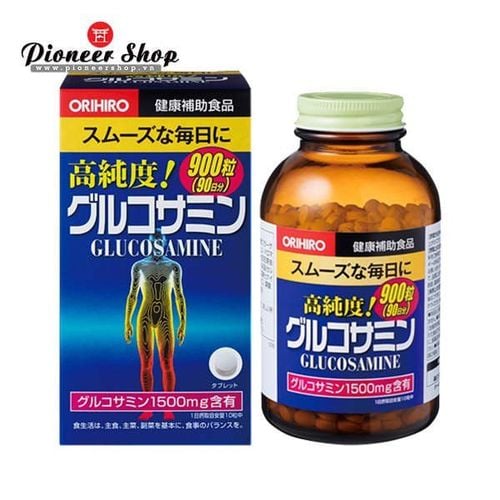
Thuốc bổ xương khớp Glucosamine
Most Glucosamine supplements are safe for most people. However, some of the possible risks or possible adverse reactions include:
Nausea and vomiting Diarrhea Heartburn Abdominal pain You should not take glucosamine if you are pregnant or breast-feeding due to lack of proper nutrition. Evidence supports safety when used in these at-risk populations.
Glucosamine may worsen blood sugar control for people with diabetes, although this risk is relatively low. If you have diabetes or are taking diabetes medication, talk to your doctor before taking glucosamine. In short, Glucosamine exists naturally in your body and plays an important role in the development and maintenance of healthy joints. Although glucosamine is used to treat various joint, bone, and inflammatory conditions, such as IBD, interstitial cystitis, and TMJ, most research only supports its effectiveness in symptom control long-term osteoarthritis. The safe dose for most people is 1,500 mg per day but can cause mild side effects. If you're looking for a pain reliever for osteoarthritis, a glucosamine supplement might be worth considering, but be sure to talk to your doctor before using it.
Please dial HOTLINE for more information or register for an appointment HERE. Download MyVinmec app to make appointments faster and to manage your bookings easily.
Reference source: healthline.com






